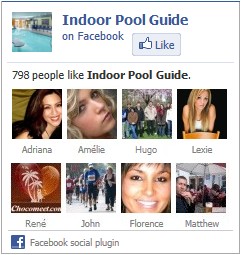
Chlorination
This is the most commonly used method of sanitation today. Bromine and iodine are other members of the halogen family of chemicals also used to sanitize water. Other chemicals include ozone, silver and copper compounds. Ultraviolet light is a nonchemical disinfectant. Each of these methods will be covered to some extent, but chlorination is presently the most widely accepted means of treating pool water. All chlorine – regardless of whether it is introduced as a gas or as a dry or liquid compound when added to water, does exactly the same thing: It forms hypochlorous acid (HOCI) and hypochlorite ions (OCI-).
HOCl is the killing form of chlorine; OCI- is relatively inactive. However, together, they are free available chlorine (FAC).
Because each of the many chlorinating agents produces the same active form of chlorine, we can ignore the source for now and deal with the process of chlorination in general.
HOCI is an extremely active, powerful chemical. It not only destroys such harmful organisms as bacteria, algae, fungi, viruses, etc., it Sanitation Sanitation is the process of destroying organisms that are harmful to People. These organisms, referred to as pathogens, include bacteria, fungi, viruses, etc. Chlorination also controls algae (which are not usually harmful themselves, but may harbor pathogenic organisms). In addition to being unsightly, algae can cause the surfaces around the pool to become slippery and unsafe. While each of these organisms may require different amounts of HOCI for control, local health officials often establish the required amount for public swimming pools. Very often, local codes will specify an FAC residual of 1.0 -3.0 parts per million (ppm), but some might vary from this.also destroys impurities that are not removed by filtration. These two processes are called sanitation and oxidation.
Sanitation
Sanitation is the process of destroying organisms that are harmful to People. These organisms, referred to as pathogens, include bacteria, fungi, viruses, etc. Chlorination also controls algae (which are not usually harmful themselves, but may harbor pathogenic organisms). In addition to being unsightly, algae can cause the surfaces around the pool to become slippery and unsafe.
While each of these organisms may require different amounts of HOCI for control, local health officials often establish the required amount for public swimming pools. Very often, local codes will specify an FAC residual of 1.0 -3.0 parts per million (ppm), but some might vary from this.

